Draw the Curtains!
Curtains have been a part of our living since Ancient Egyptian era and have evolved with time like the others. Different eras had different styles. Let’s understand how curtains can be used in our interiors, whether home or office or commercial place in an eco-friendly sustainable way.
Functionality of curtains:
Why do we need curtains?
Curtains effectively filter the sunlight or block according to your requirements. In addition to providing us privacy, they shield our homes from unwanted pollutants, heat and dust thereby improving the air quality. They also help in insulating the interiors from the outdoor climatic conditions.
One can choose from varied choices that are available to compliment the décor in terms of colour, material, style and cost. Dark colour curtains make the room appear intimate, warmer whereas light colored linen curtains make the room appear spacious and airy.
Drapes improve the aesthetics of the interior decor by adding texture, flow, colour, drama and dimension. Hence it makes an integral part of any interior design.
Sustainability in curtains:
Curtains that are made from natural & environment friendly fibres using plant-based dyes and non-toxic treatments have proved to be a healthy option. Biodegradable fabrics like linen, cotton or hemp, silk , wool, tencel are most suitable for curtains. Stain-resistant” or “wrinkle-free” curtains contain chemicals like formaldehyde, etc. which are toxic in nature, and are to be avoided. You can look for the GOTS (Global Organic Textile Standard) certification and fair trade practices when you purchase the curtain material.
Types of Curtains:
Based on the fabric, style and functionality, there are various types and styles of curtains, to suit your taste and need.
Cane/bamboo curtains –
are versatile and one of the oldest. They fit in many decor styles, are cheap, environment friendly and keep the interiors cool and clean.
Energy-efficient curtains –
are made up of thick material that provides additional insulation thereby preventing air, heat, and cold from entering or escaping the windows.
For colder climates, dark coloured curtains with layers of insulated materials that stretch from top of window to the floor works best. For hotter regions, light coloured curtains with opaque lining can help to block the light. These are also called thermal curtains as they help in controlling the temperatures indoors.
Due to its pattern design and air-tight substance, honeycomb blinds are also energy-saving window coverings used for insulation purposes.
Wooden Venetian shades –
are natural insulators, the wood being sourced from sustainable resources (FSC). They come in different styles such as horizontal, motorised, roller, and vertical. They bring a lot of character to the interiors, may be expensive at first but are sustainable in the long run.

Decorative curtains –
- Sheer curtains look dressy and allow plenty of natural light to come through the windows while providing the least amount of privacy.
- Valances are a decorative type of curtain which can be used in different ways, starting from traditional to modern. Valances give a lovely touch to the interior design of a restaurant, home office, or bedroom.
- Window scarf is a piece of cloth, often a lightweight fabric, that hangs down from a curtain rod or brackets at the top of a window on one or both sides adding a gentle frame around it.
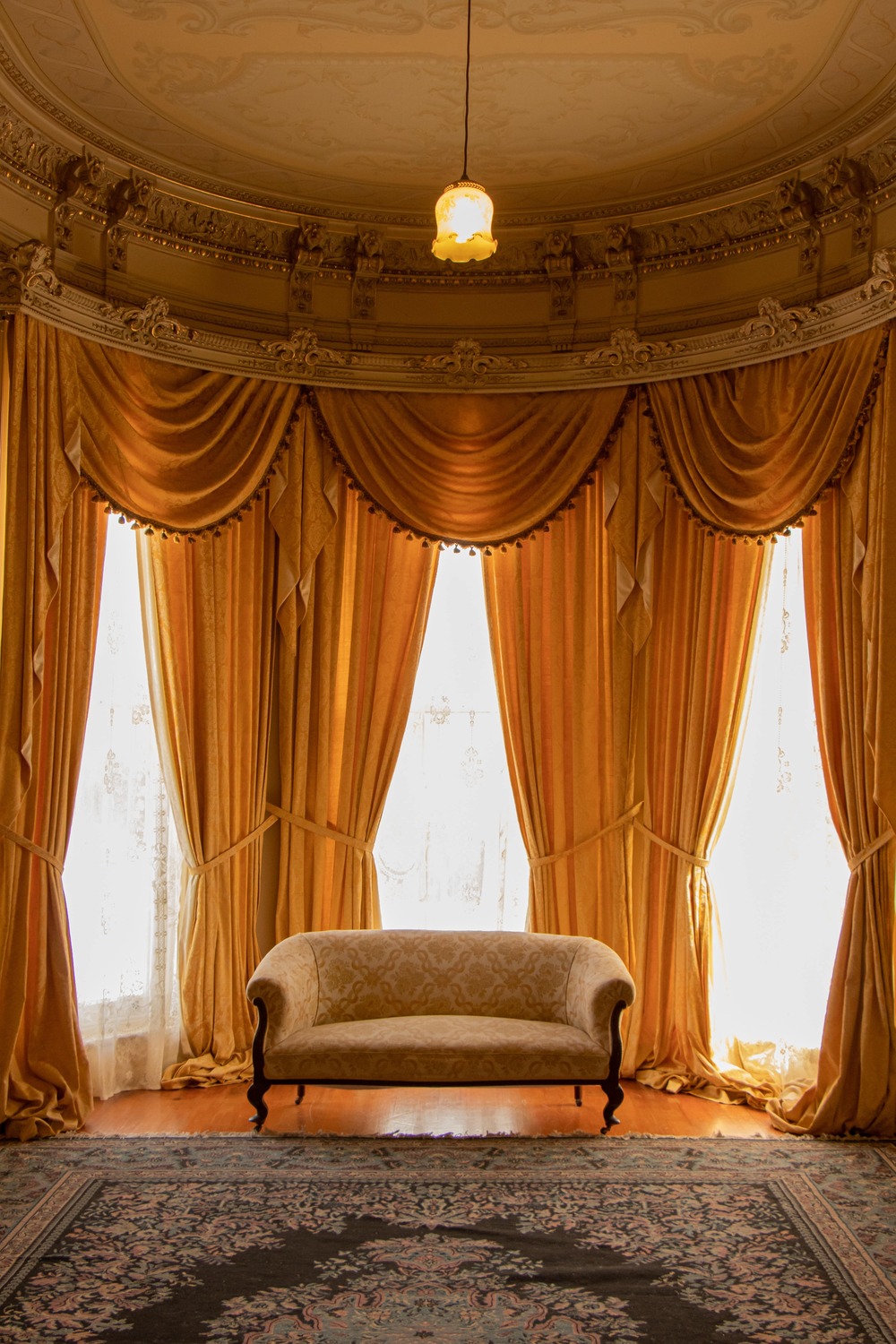
Tab-top curtains – are very easy to assemble. They come with protruding loops that are attached at the top of the panels and hang on the rod. Different sizes, colours and materials are available in this style.
Single panel curtain – In a single panel curtain one panel covers the entire window. We have different styles – s-fold, loop, gathers, etc.
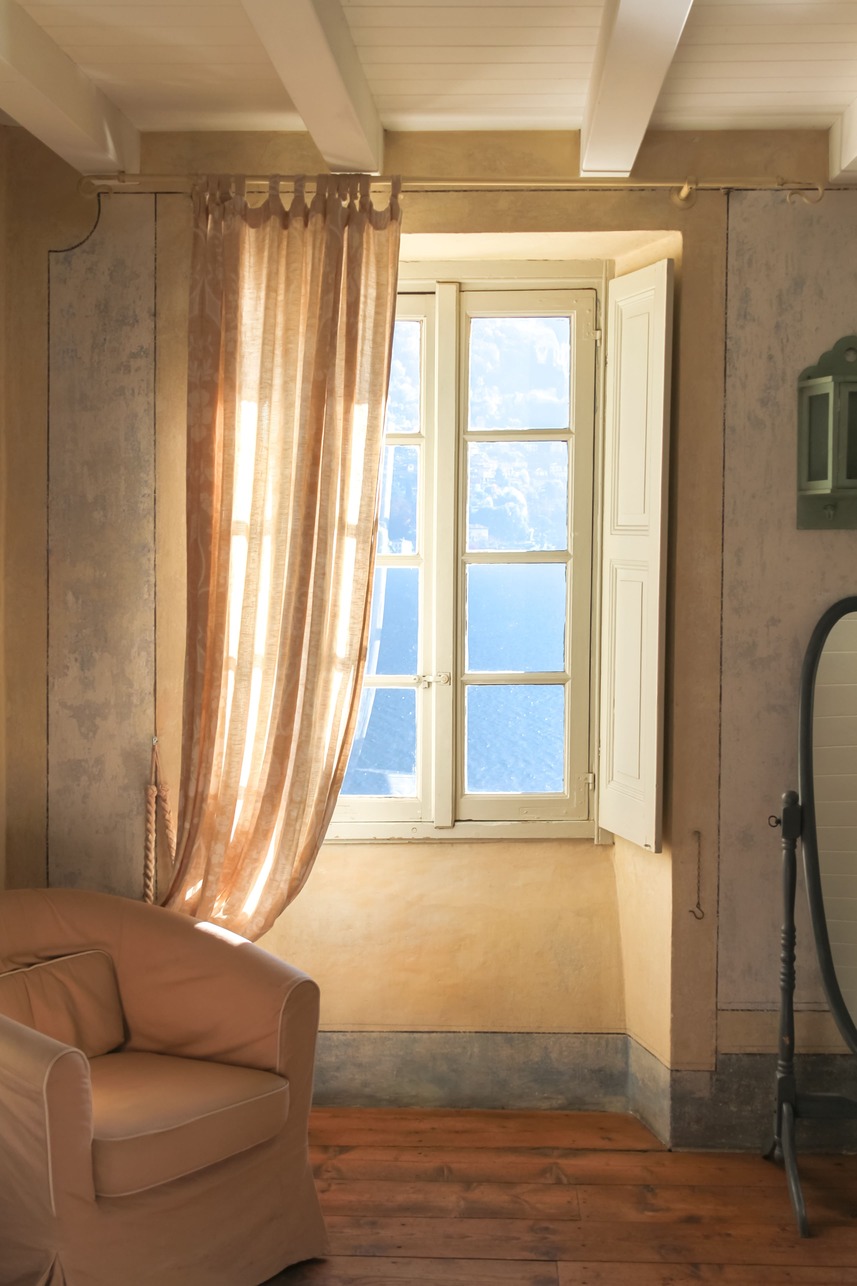
Double panel curtains – Panel pair curtains consist of two separate curtain panels on opposite sides. This type of curtain is popular in classic and contemporary decor.
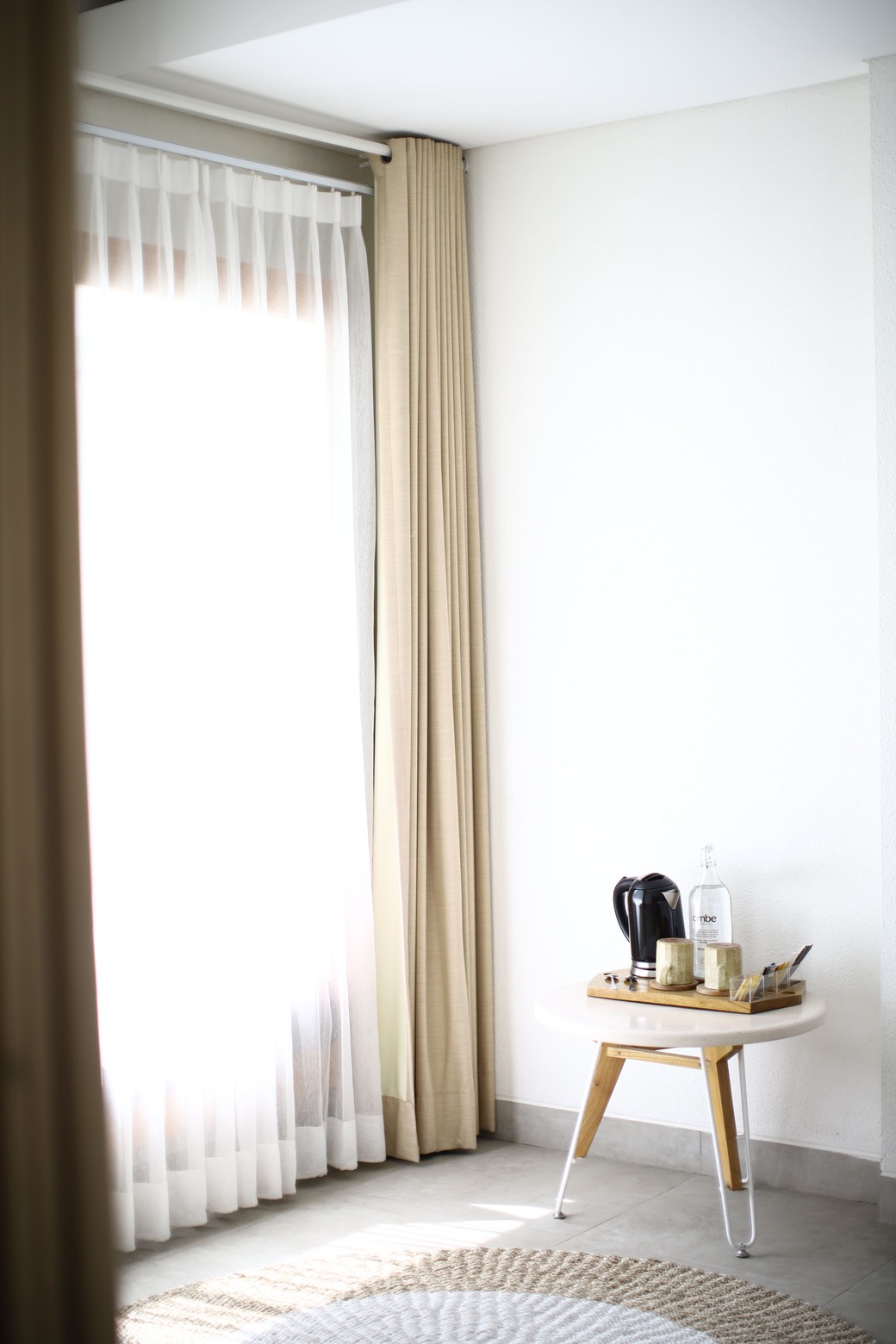
Zebra curtains – are made up of two materials stitched together, with one to block light and other to let the light in. They work very well indoors as you can make them sheer or totally block the light as per your need.
Pinch-pleated curtains – are the most popular type to give a formal and elegant look.
Ripplefold/ S-Fold curtain – is a continuous single drape that has rings swed to the top hem. They glide easily along the custom tracks/ rods. They complement many design styles
Cafe curtains – They are hung halfway, the curtain’s height can be made to match the divider line of the window. This allows the light from top to come in, providing privacy at the lower half.

Box pleat curtains – are formed by folding the fabric neatly and equally in a box hiding the pinch part. These give a cleaner look and fit best in dining rooms, lounges, or bedrooms.
Smart homes with automated curtains –
- Motorised wooden blinds – are sleek in appearance, easy to maintain and quite durable. Being cordless becomes safe for children and pets as cords can pose a suffocation hazard when tangled in them.
- Motorised skylight shades -As the name suggests, they are used for high ceilings in commercial spaces. They are perfect for any skylight window controlling the amount of light with convenience.
Accessories for Curtains:
Rod – It is an essential accessory to hang any curtain with the help of rings and hooks. There are different types of rods that differ in style and material. It can be a single, double or minimal one.
Tiebacks or Holdbacks – Another key accessory is available in different designs. They are used for minimal decor and formal look.
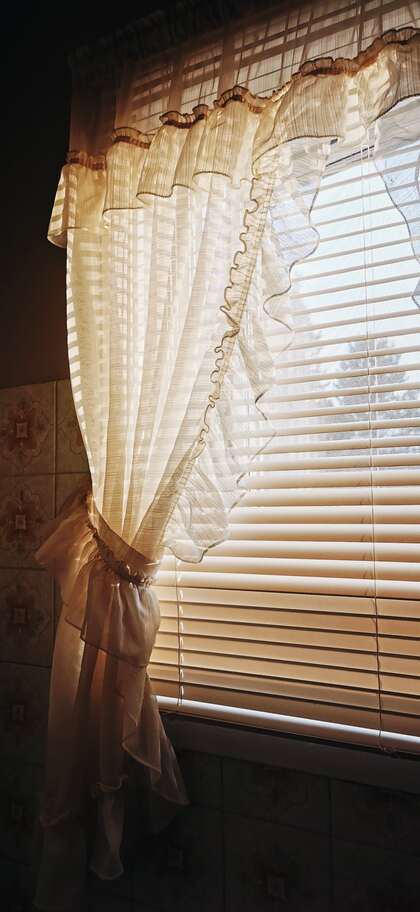
Laces / Borders/ Trims/ Frills – Plain/ textured/ printed curtains can be further enhanced by laces, trims or frills as per your home interiors.
Tassels – They are available in varied colours and materials. The materials for the tassel can be either cotton, silk, and in other decorative elements like beads, faux leather and metal.
Pelmet – Pelmets are commonly used in concealing curtain fixtures. Pelmets have an elegant appearance. For the minimalist, they can be painted with the wall paint.
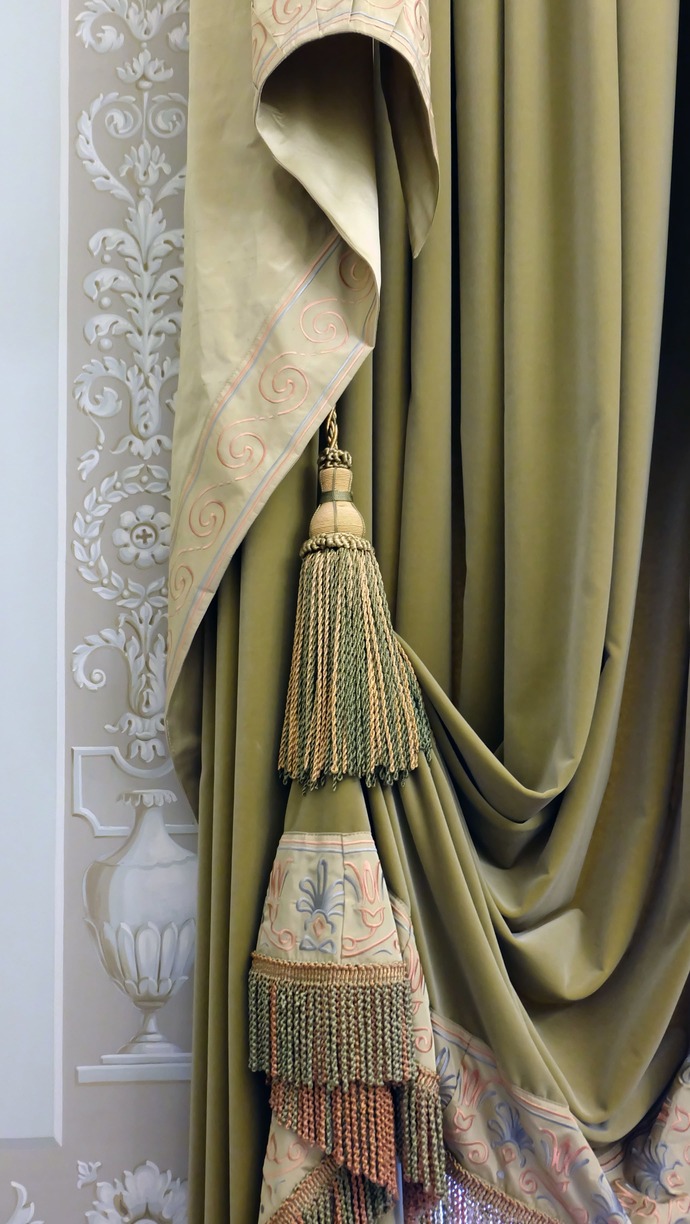
Types of Fabric:
Cotton – Cotton curtains offer a cool, subtle look and are used more in warmer climates.
Linen – It is a breathable fabric and environment friendly. The neutral shades suit best in hot weather conditions.
Wool – A thick, dense weave of wool makes it an excellent insulator and works best for colder climates.
Silk – Although a bit more expensive and delicate than other materials, lining is suggested for its longevity.
Tencel – it is obtained from sustainable wood pulp. It is expensive because of the technology required for its production process.
Tips:
- Floor-length curtains will elongate your window and make your room feel taller. Since they don’t quite touch the floor, curtains hang perfectly straight.
- Different fabrics have different washing instructions, hence its best to check them before putting them in the laundry.
- Vacuuming your curtains once in a while helps in keeping them fresh, or can be washed / dry cleaned once in 6 months depending on the fabric and climatic conditions.
- Adding sheer curtains on east and west facing windows would block the harsh sunlight and allow a fair amount of light to pass in.
- Curtains with white undertones, pastel hues, and light browns add warmth to any congested space giving a modern minimalist setting.
- For the minimalistic look, pelmets can be painted with the wall paint.
- Motorised curtains are perfect for hard-to-reach windows. Rising or lowering your shades can be as easy as the push of a button.
Please note: Polyester, recycled polyester and nylon are not advisable as they are a burden to the planet.
Did you know?
The Chinese and Ancient Egyptians used curtains / blinds made from bamboo and reeds to protect themselves from heat and dust. In the Victorian Era curtain became a status symbol; two drapes on a rod with tiebacks, opaque panels, exquisite hardware with valances, laces and trims to have an opulent look.
Hope this information helps you find your curtain style!

0 comments